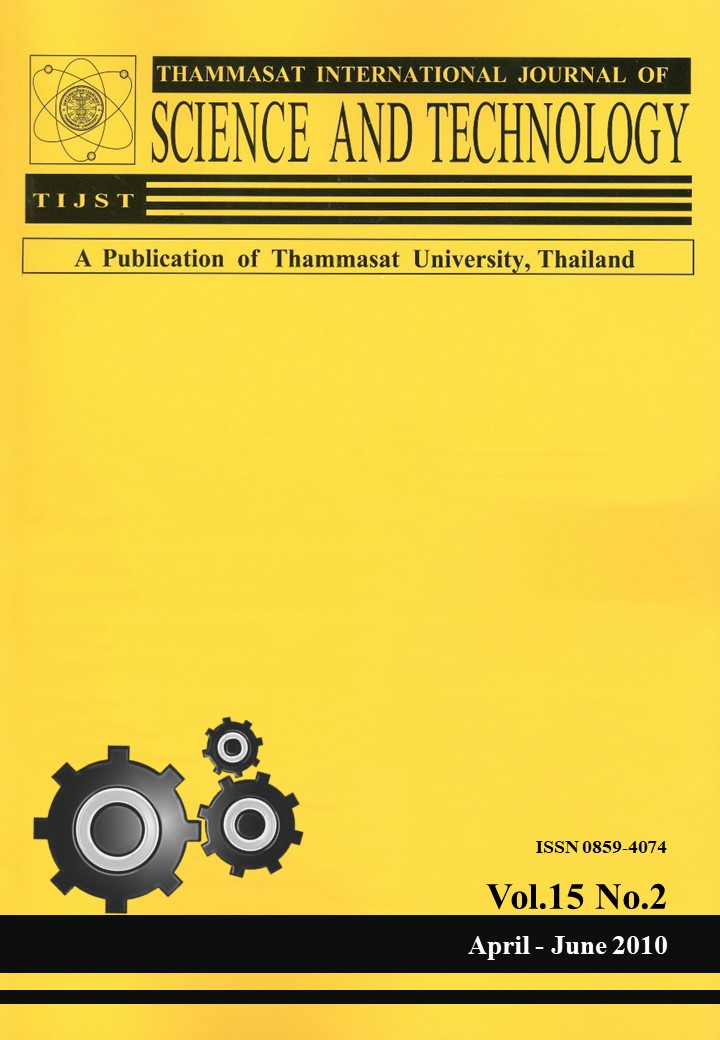Effect of Production Time on Energy Use of a Tube-Ice Making Tower
Main Article Content
บทคัดย่อ
One of the important industries for a tropical country is the ice-making industry. In particular, tube ice is a form of ice for consuming, which is available in many grocery stores. This research is a numerical study of the effect of the production cycle time on the energy use of a tube-ice making process. The system is assumed one dimensional in the radial direction and unsteady. The governing equations are composed of the wall and the ice regions. The boundary condition at the wall surface is a convective type whereas the boundary condition at the interface is a isothermal solidification. The governing system is transformed into a dimensionless form, which is numerically solved by the finite difference method. The numerical solution in terms of ice thickness is compared with the data measured from the ice factory. There is a qualitative agreement between the numerical prediction and data obtained from the field measurement. From the numerical prediction, it can be seen that the average energy consumption is increased by approximately 5.8 kJ/m per minute with increase of the production cycle time. On the other hand, as the production cycle time increases, the average specific energy consumption reaches a minimum value of 0.341 kJ/g at a production cycle time of 14 minutes. Reduction of the production cycle time from 28 to 14 minutes leads to the higher value of the average specific energy consumption by 0.7 percent.
Article Details
รูปแบบการอ้างอิง
Tangthieng, C. (2015). Effect of Production Time on Energy Use of a Tube-Ice Making Tower. Science & Technology Asia, 15(2), 1–9. สืบค้น จาก https://ph02.tci-thaijo.org/index.php/SciTechAsia/article/view/41288
ประเภทบทความ
Articles


